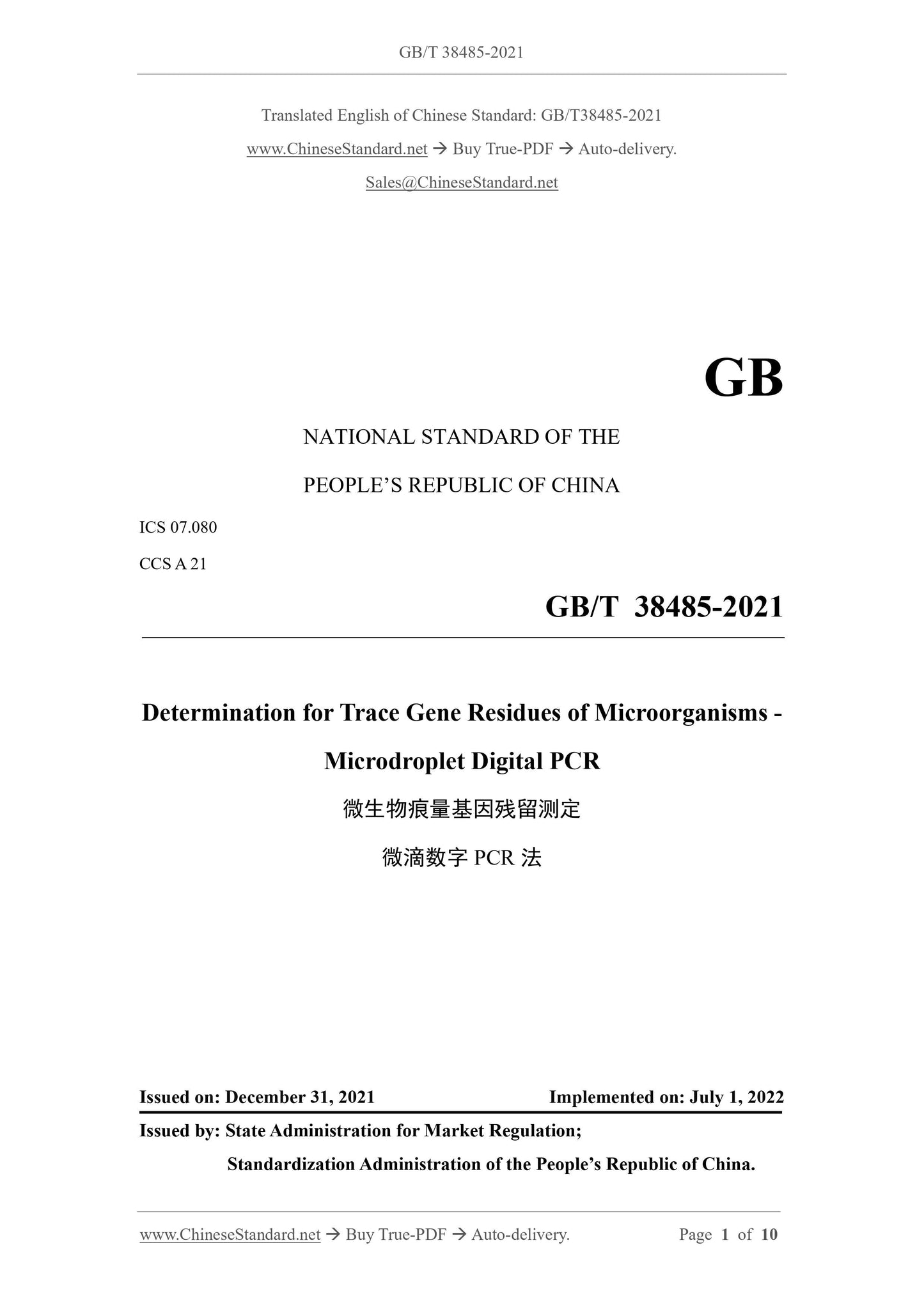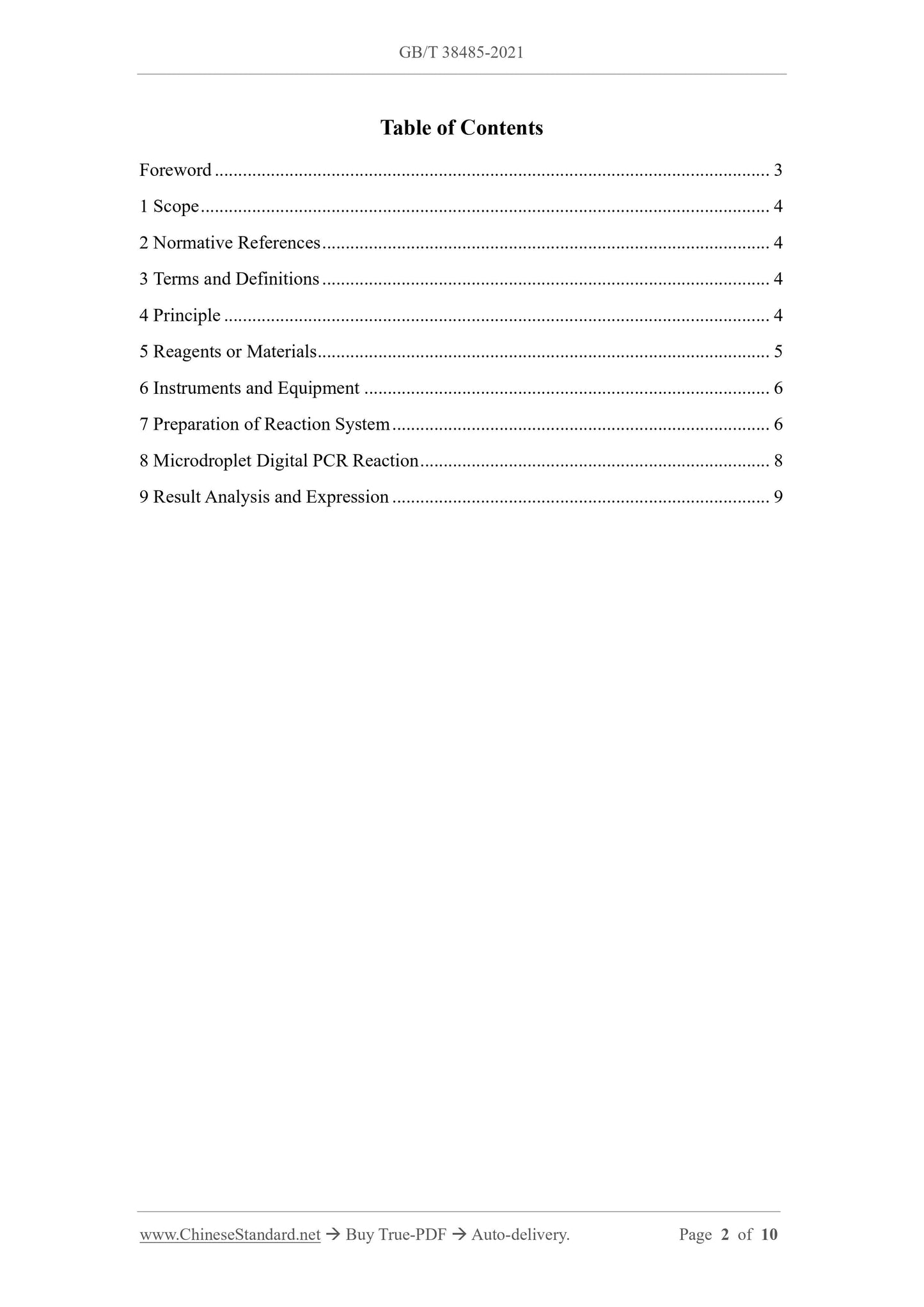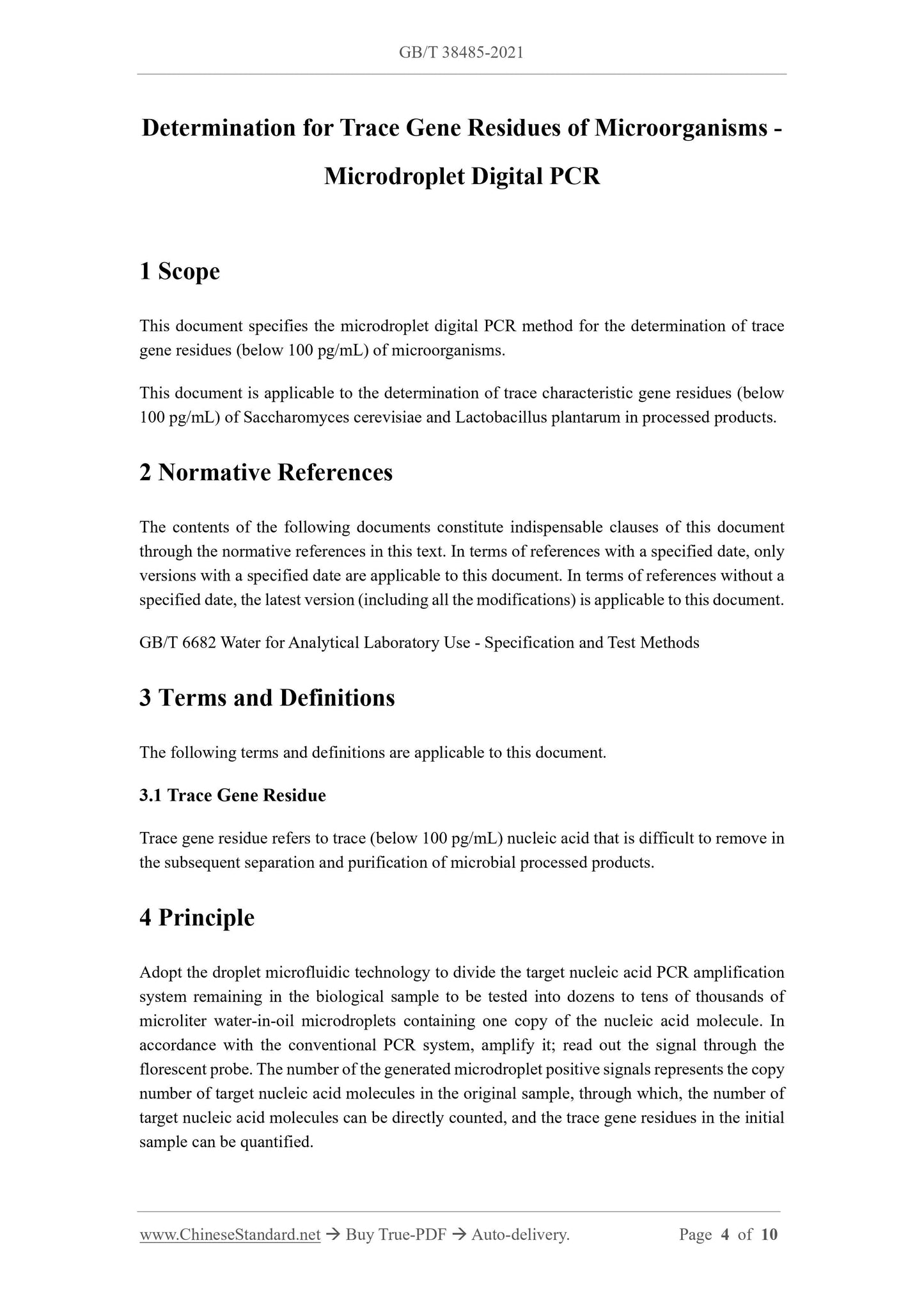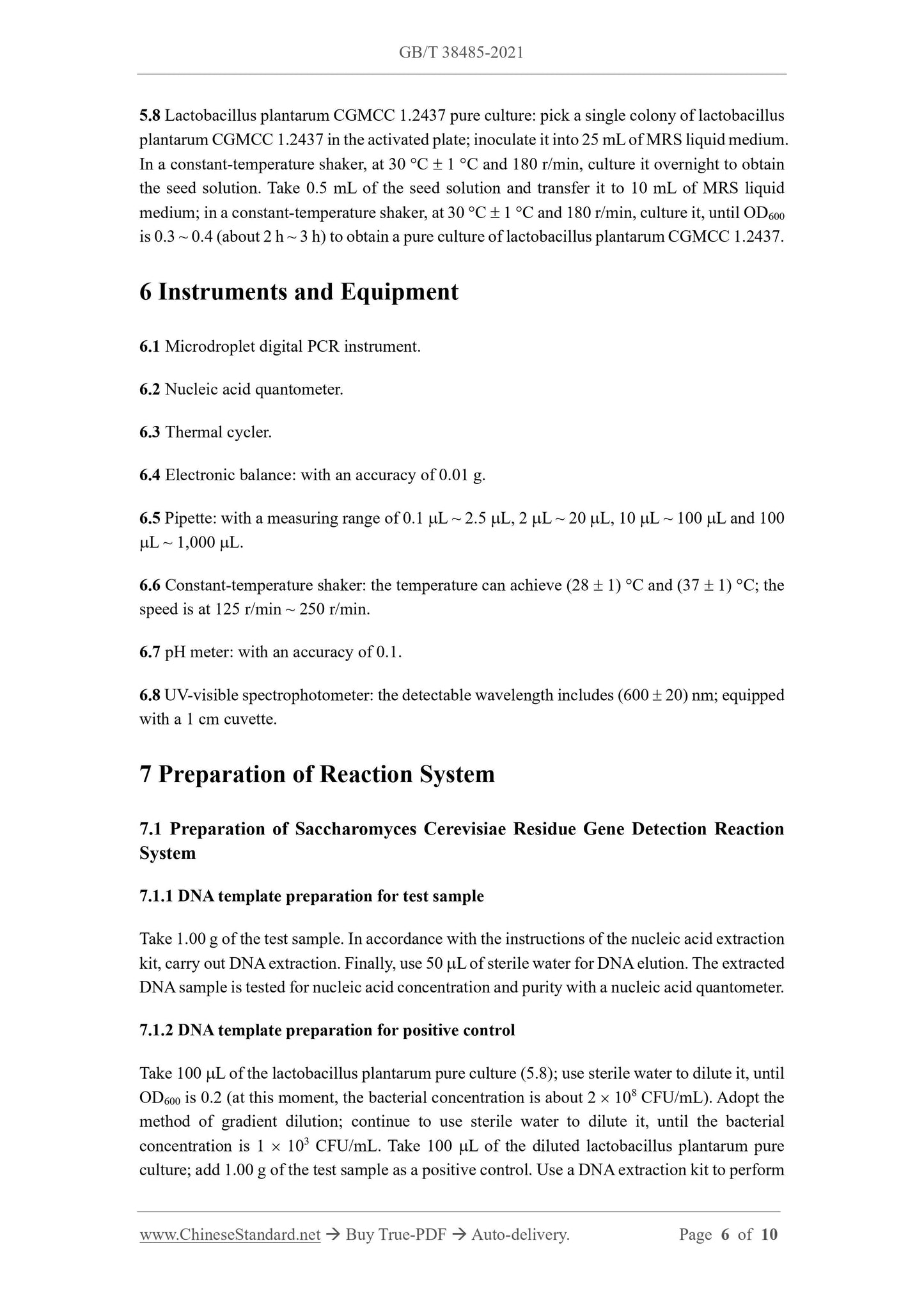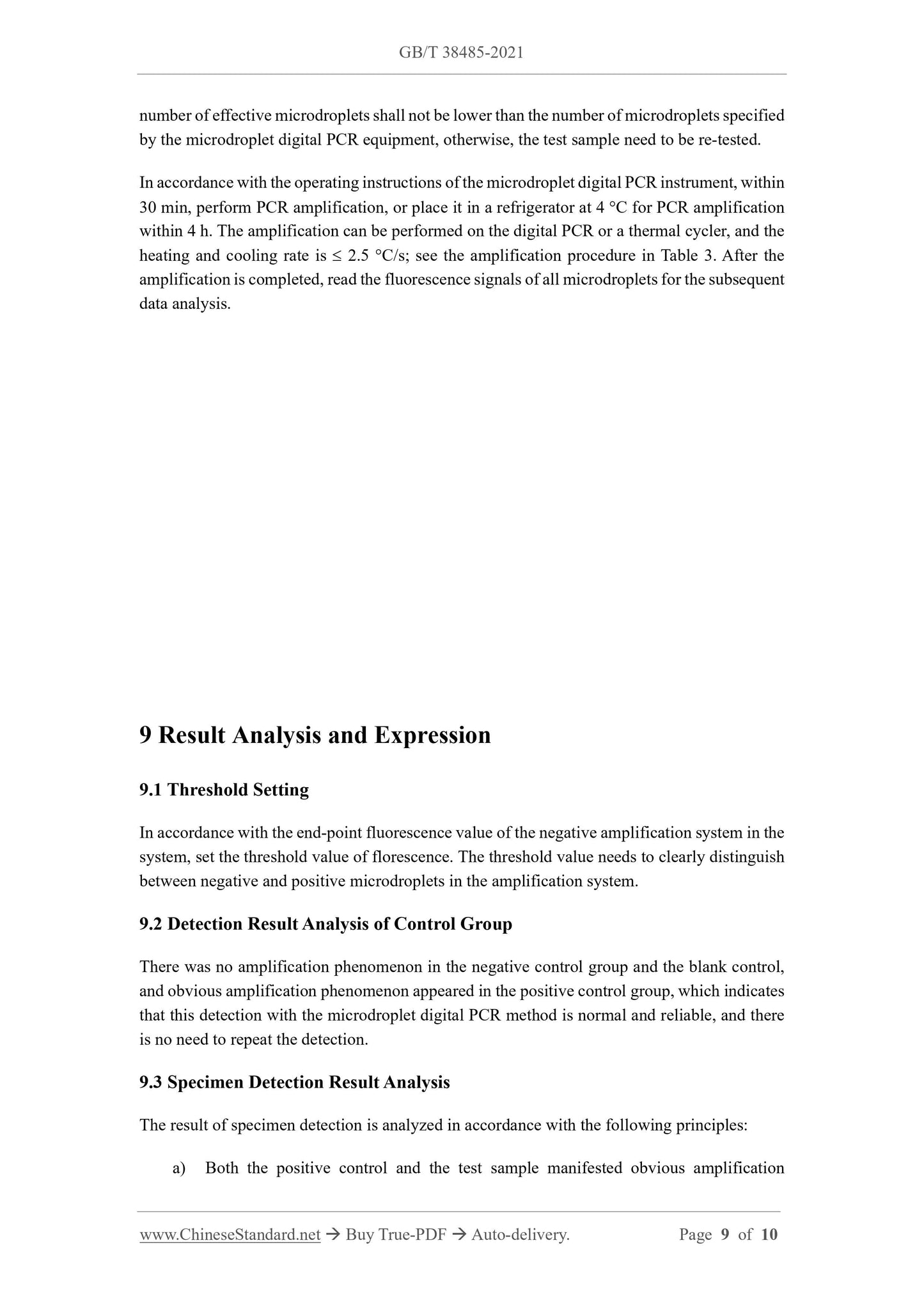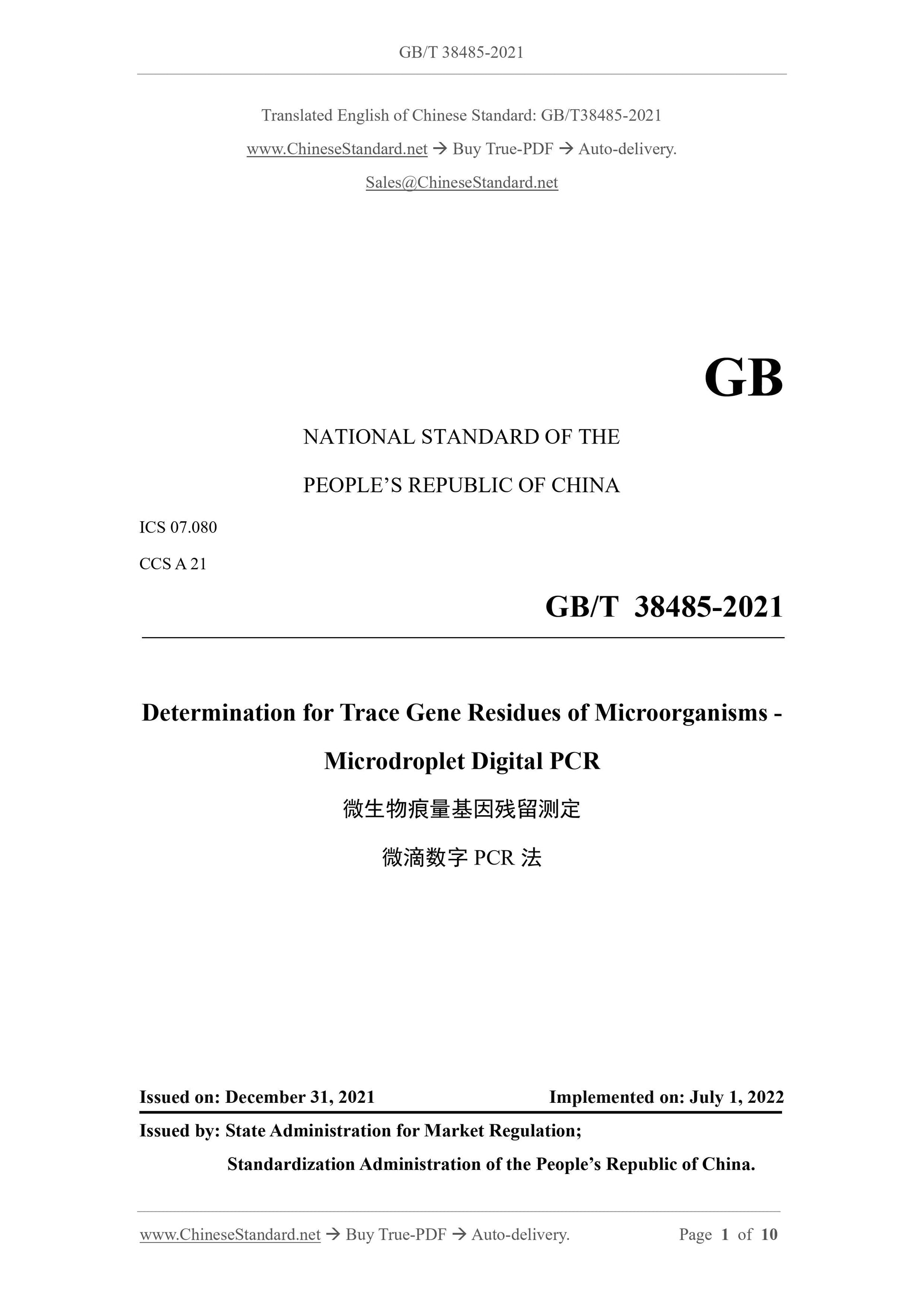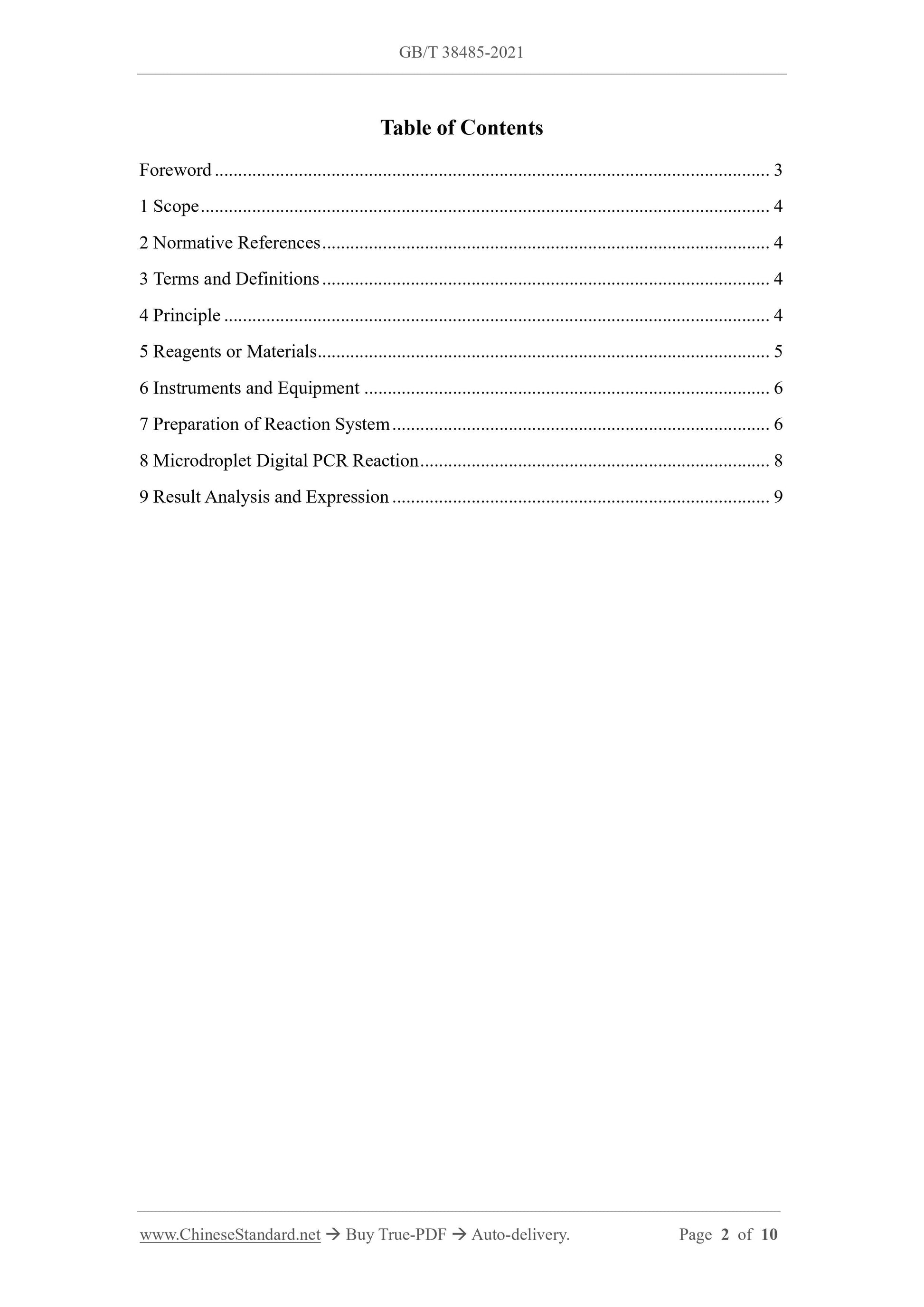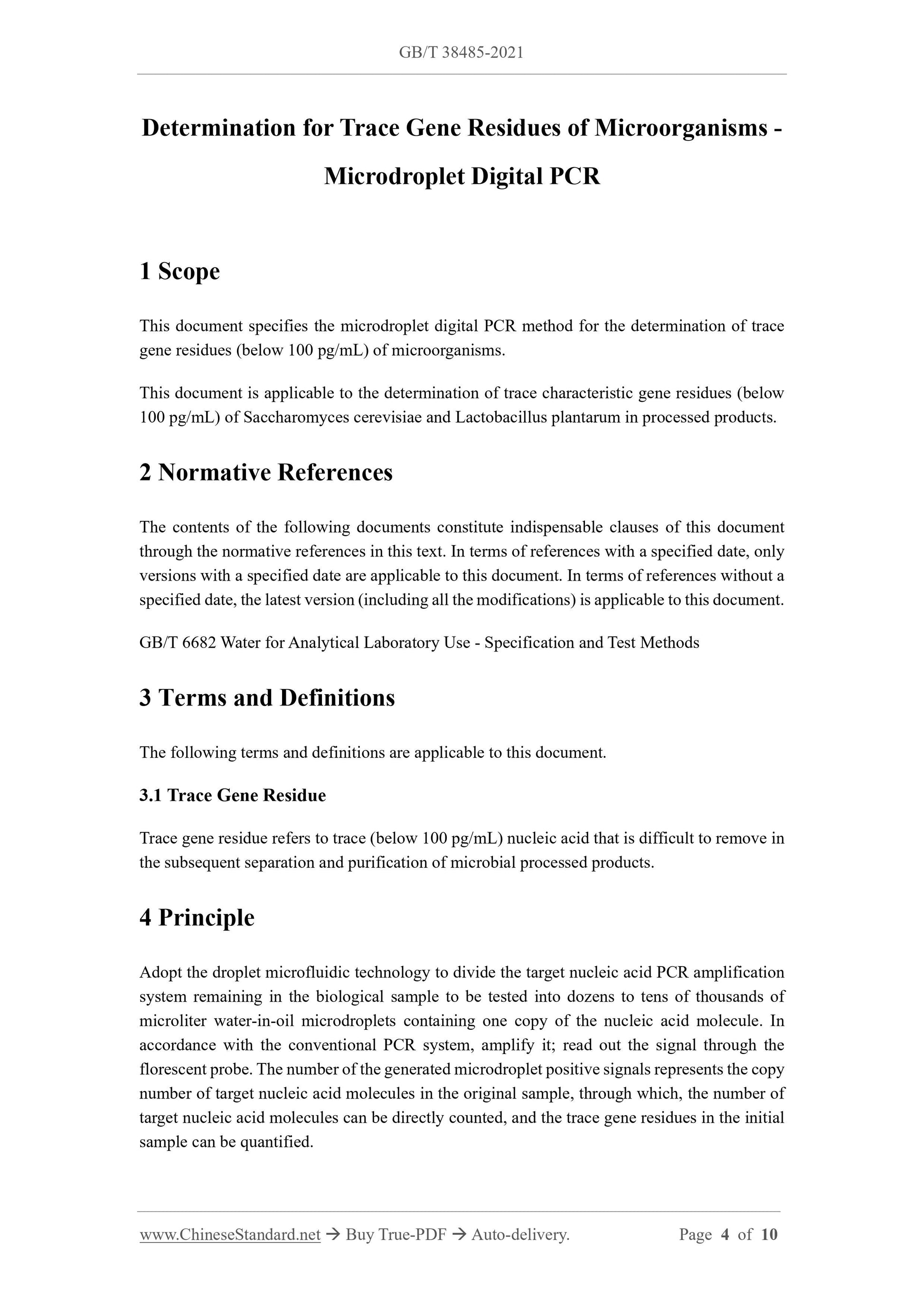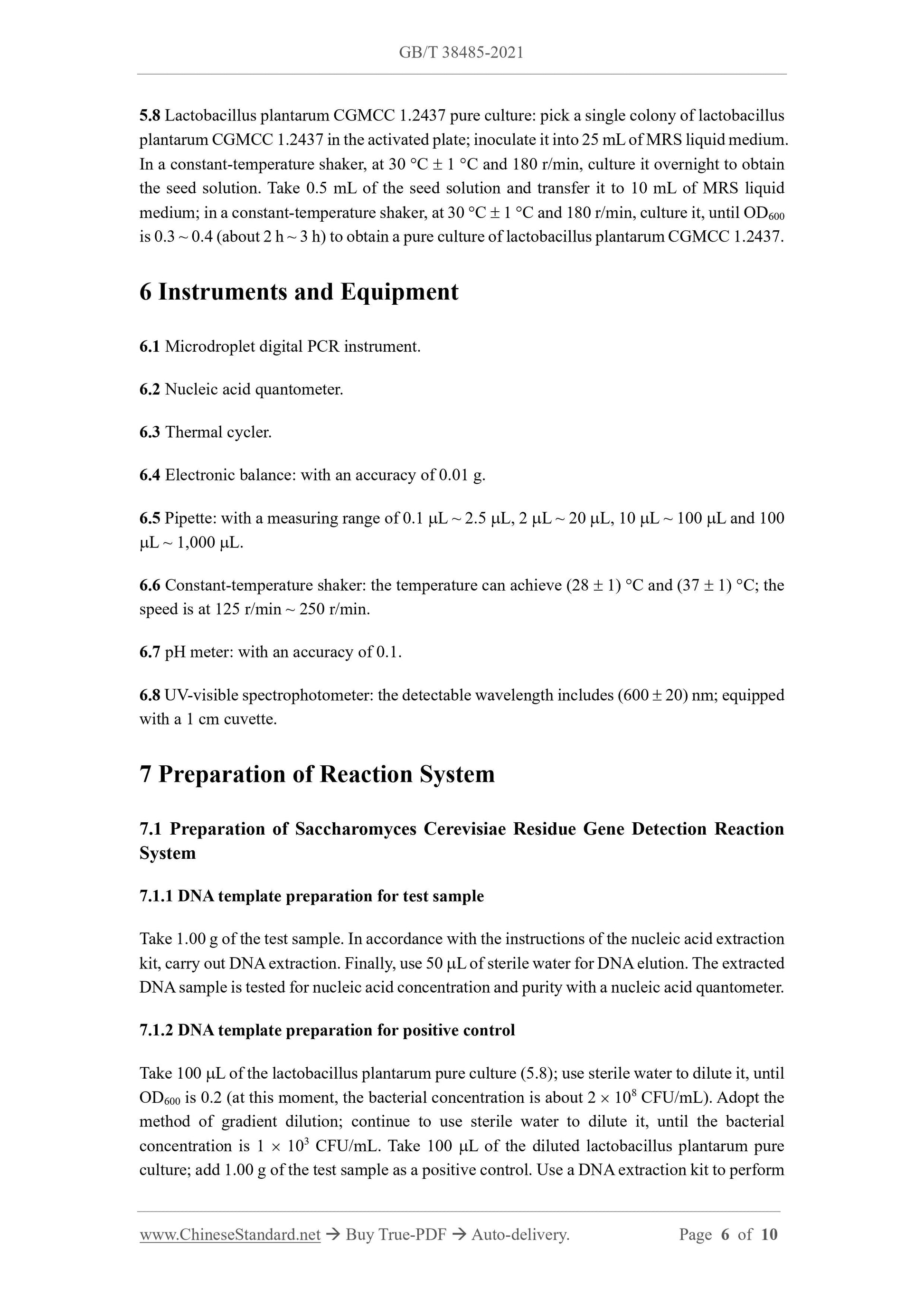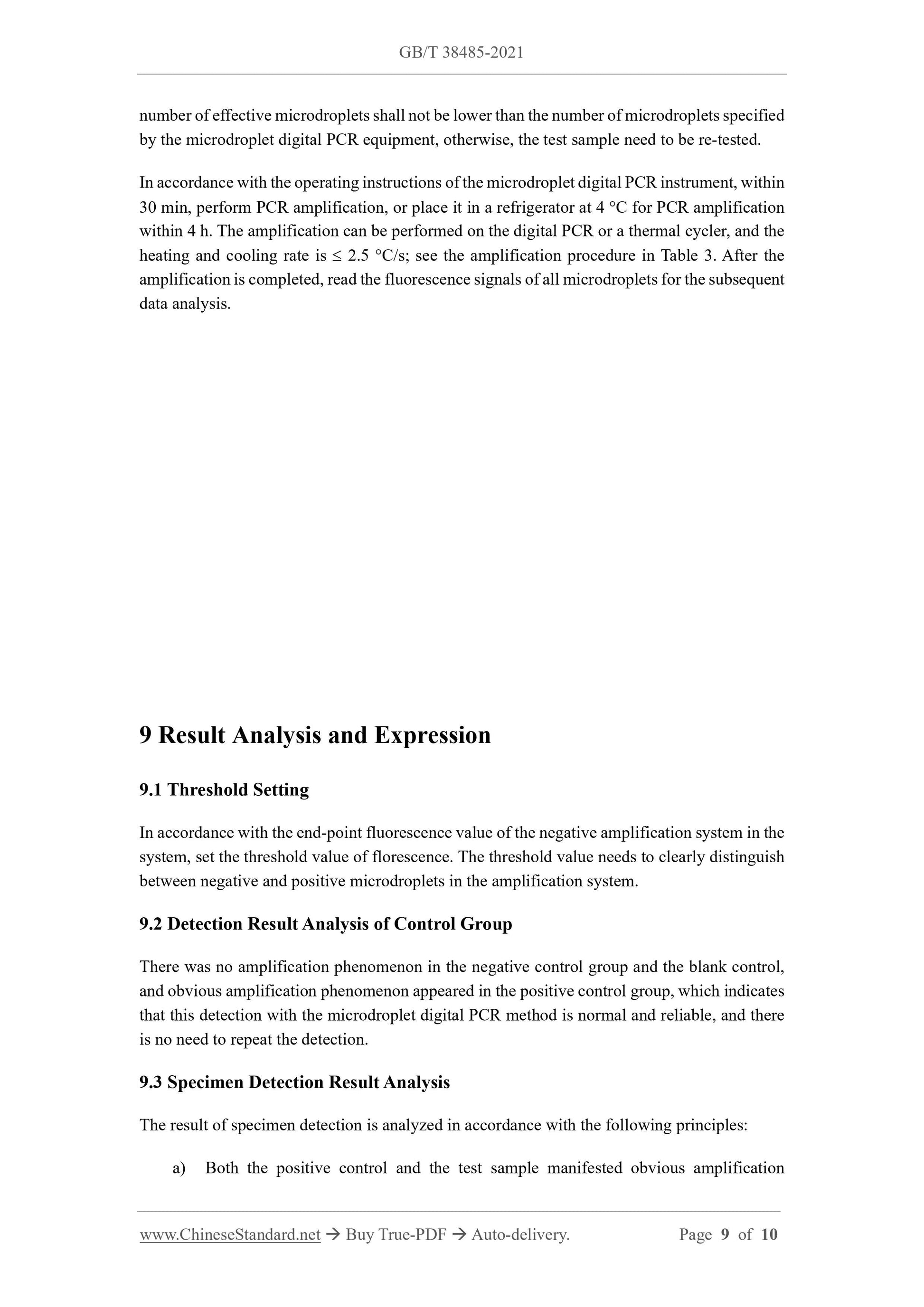1
/
of
5
www.ChineseStandard.us -- Field Test Asia Pte. Ltd.
GB/T 38485-2021 English PDF (GB/T38485-2021)
GB/T 38485-2021 English PDF (GB/T38485-2021)
Regular price
$155.00
Regular price
Sale price
$155.00
Unit price
/
per
Shipping calculated at checkout.
Couldn't load pickup availability
GB/T 38485-2021: Determination for trace gene residues of microorganisms - Microdroplet digital PCR
Delivery: 9 seconds. Download (and Email) true-PDF + Invoice.Get Quotation: Click GB/T 38485-2021 (Self-service in 1-minute)
Newer / historical versions: GB/T 38485-2021
Preview True-PDF
Scope
This document specifies the microdroplet digital PCR method for the determination of tracegene residues (below 100 pg/mL) of microorganisms.
This document is applicable to the determination of trace characteristic gene residues (below
100 pg/mL) of Saccharomyces cerevisiae and Lactobacillus plantarum in processed products.
Basic Data
| Standard ID | GB/T 38485-2021 (GB/T38485-2021) |
| Description (Translated English) | Determination for trace gene residues of microorganisms - Microdroplet digital PCR |
| Sector / Industry | National Standard (Recommended) |
| Classification of Chinese Standard | A21 |
| Word Count Estimation | 7,765 |
| Issuing agency(ies) | State Administration for Market Regulation, China National Standardization Administration |
Share
